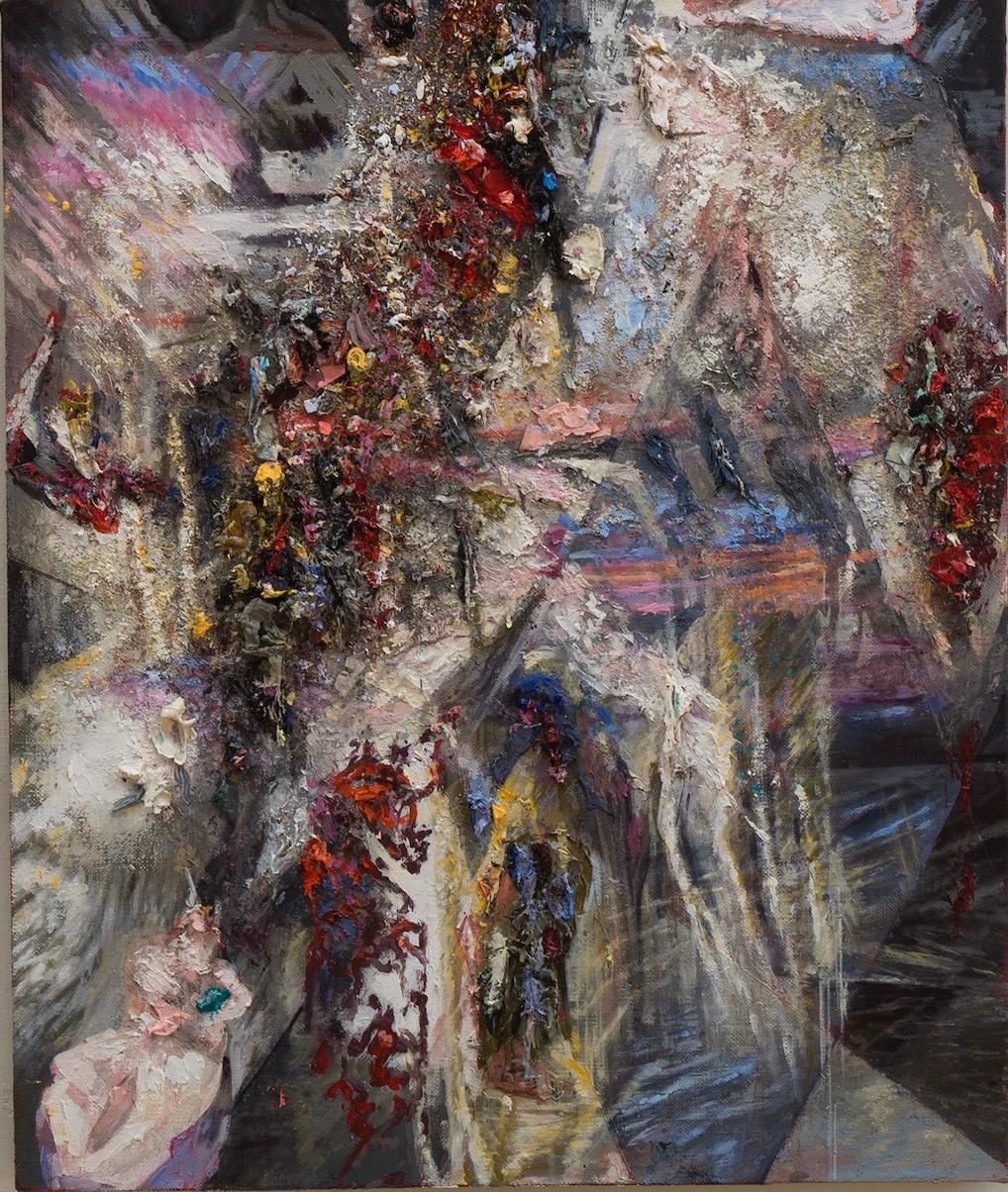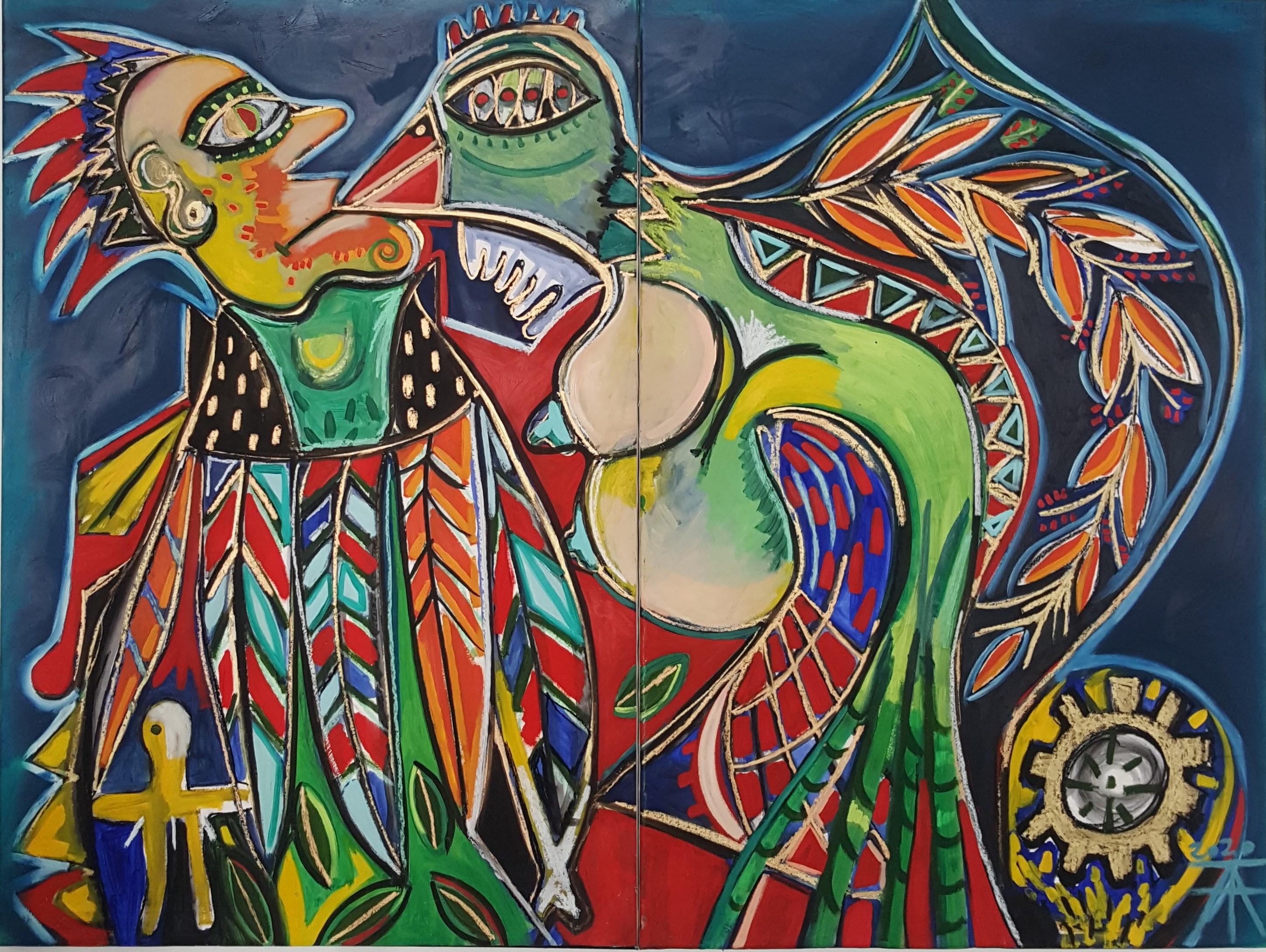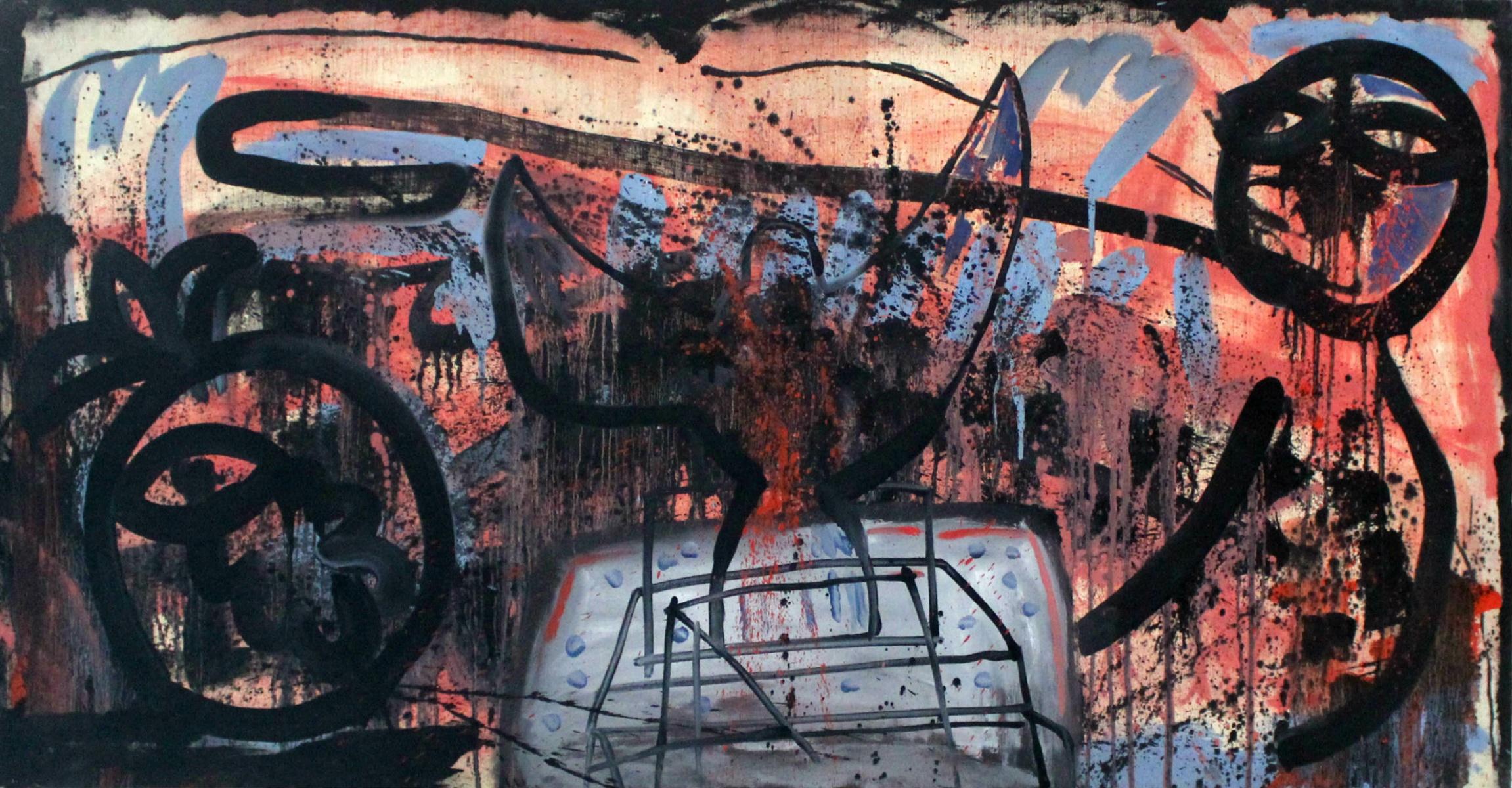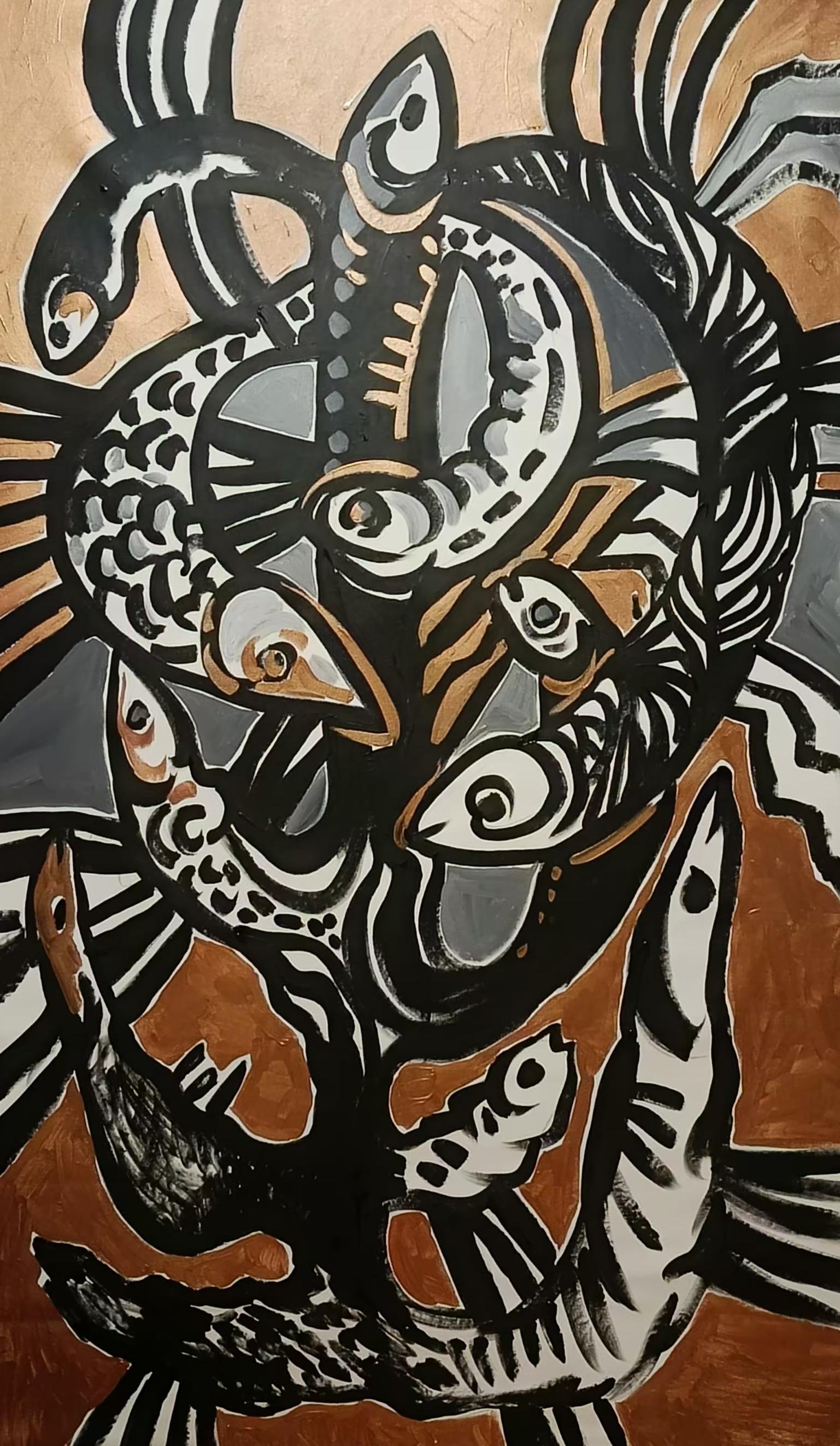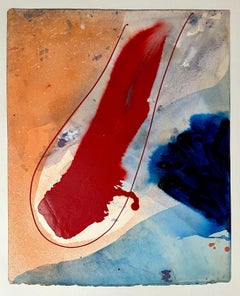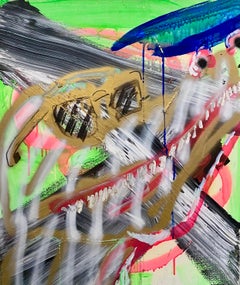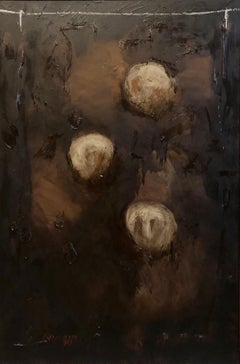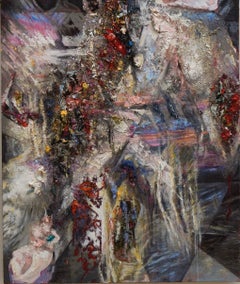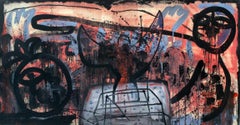Items Similar to Surrealist Painting, Birds of Prey with Fish J. James Akston
Want more images or videos?
Request additional images or videos from the seller
1 of 5
J. James AkstonSurrealist Painting, Birds of Prey with Fish J. James Akston
$500
£377.65
€436.46
CA$701.33
A$780.06
CHF 408.26
MX$9,514.10
NOK 5,129.99
SEK 4,825.42
DKK 3,257.73
About the Item
J. James Akston
Surrealism, Bird with Fish, marine scene
Acrylic on Board
Frame: 9.75 X 8
Image: 4.5 X 3.25
Joseph James Akston was a Polish American sculptor, painter, known for surrealist abstract painting and Aubusson (for Les Ateliers Pinton Frères, tapisserie, Aubusson) tapestry artist. Born in Warsaw, Poland in 1898 he died in Palm Beach Florida in 1983. During the 1960s and '70s the entrepreneur-artist James Joseph Akston adopted a unique Surreal Expressionist style in order to present his private primordial universe and lampoon its denizens, a ribald cast of animal creatures with human foibles. A successful industrialist, he began his career with General Motors foreign operations and then started his own business.
Intermittently he studied painting, first with Jerry Farnsworth in North Truro (Mass.) and then with Jose Clemente Orozco in Mexico. In the early 1960s Akston became publisher-editor of a group of art publications which included The Magazine Arts. Initially an abstract expressionist, Akston had one-man exhibitions at the New York Convention Center and the Corcoran Museum in Washington. Since 2015 the record price for this artist at auction is $12,575 USD for Spheres Aux Triangles Aubusson Tapestry, sold at Bonhams New York in 2019.
He was a Graduate of Georgetown University. He sat on the board of the Norton Museum.
Exhibitions
1976 Hokin Gallery
1966 Gallery 63 NYC
1960 Gallery 63 Rome , Italy
Select Public Collections
National Museum, Wshington DC
Boca Museum of Art
Whitney Museum of Art, NYC
Museum of Modern Art, NYC
Museum of African Art Washington DC (Now part of Smithsonian Museum)
Bibliography: 1962 Art Voices Magazine: Editor and Chief
Beginning of the Beginning by J JAMES AKSTON
First Book of Pop Art
Akston: 25 Creative Years by Gordon Brown
Voyage to the Black Hole by Gordon Brown
Art Digest Newsletter, 1960s
- Creator:J. James Akston (1898 - 1983)
- Dimensions:Height: 9.75 in (24.77 cm)Width: 8 in (20.32 cm)
- Medium:
- Movement & Style:
- Period:
- Condition:good. wear to frame and matting, refer to images.
- Gallery Location:Surfside, FL
- Reference Number:1stDibs: LU38214495442
About the Seller
4.9
Platinum Seller
Premium sellers with a 4.7+ rating and 24-hour response times
Established in 1995
1stDibs seller since 2014
1,799 sales on 1stDibs
Typical response time: <1 hour
- ShippingRetrieving quote...Shipping from: Surfside, FL
- Return Policy
Authenticity Guarantee
In the unlikely event there’s an issue with an item’s authenticity, contact us within 1 year for a full refund. DetailsMoney-Back Guarantee
If your item is not as described, is damaged in transit, or does not arrive, contact us within 7 days for a full refund. Details24-Hour Cancellation
You have a 24-hour grace period in which to reconsider your purchase, with no questions asked.Vetted Professional Sellers
Our world-class sellers must adhere to strict standards for service and quality, maintaining the integrity of our listings.Price-Match Guarantee
If you find that a seller listed the same item for a lower price elsewhere, we’ll match it.Trusted Global Delivery
Our best-in-class carrier network provides specialized shipping options worldwide, including custom delivery.More From This Seller
View AllFrench Surrealist Abstract Painting
By Georges Dussau
Located in Surfside, FL
Georges DUSSAU est né le 14 Mars 1947, à Chalon-sur-Saône (France)
Il vit et travaille à Mellecey (France) et à Mougins (France)
1962 - 1963 - 1964 - Ecole de dessin - Chalon-su...
Category
20th Century Surrealist Abstract Paintings
Materials
Canvas
MIchael Knigin Abstract Pop Art Surrealism Acrylic Painting
By Michael Knigin
Located in Surfside, FL
Michael Jay Knigin (American, 1942 – 2011)
Untitled (abstract)
Mixed media painting on paper, includes acrylic, watercolor and gouache
Estate stamp on the ...
Category
20th Century Contemporary Abstract Paintings
Materials
Acrylic, Watercolor, Gouache
Mixed Media Oil Painting and Spray Paint Abstract Painting Selbstportrait
By Kadar Brock
Located in Surfside, FL
"Selbstportrait Und Der Sonne"
This work is part of a series of alligator paintings Brock made in 2007. All are painted in a somewhat similar and b...
Category
Early 2000s Contemporary Abstract Paintings
Materials
Canvas, Oil, Spray Paint, Acrylic
Australian Abstract Expressionist Oil Painting
By David Rankin
Located in Surfside, FL
David Rankin is a New York-based, British-born Australian post-war and contemporary artist known for his expressionistic abstract paintings. His work can be categorized by his use of...
Category
1990s Abstract Expressionist Abstract Paintings
Materials
Canvas, Oil
Modernist American Abstract Expressionist Pop Art Painting on Canvas James Yohe
By James Yohe
Located in Surfside, FL
James Yohe
A Quiet Situation-Move
Acrylic on canvas, 1980,
Hand signed 'Yohe', titled and dated on the reverse, with label from Alexander Milliken Gallery NY.
18 1/2 x 20 1/2 in., t...
Category
1980s Post-Modern Abstract Paintings
Materials
Canvas, Acrylic
Large Figurative Abstract Expressionist Textured Painting Adolf Benca
Located in Surfside, FL
Abstract oil painting on stretched canvas featuring figures against a dark brown background. Signed upper left.
Adolf Benca was born in Bratislava, Slovakia in 1959. He immigrated to the United States in 1969 and he studied at the Cooper Union for the Advancement of Science and Art, and received a Master's of Fine Art from the Columbia University College.
Adolf Benca (born 1959, in Bratislava, Czechoslovakia), is an American Post war/ Contemporary painter of Slovakian origin.
Benca was born on 16 May 1959, in Bratislava, Czechoslovakia. He was the older of two children, the younger being his sister Lubica. His family immigrated to the United States when he was ten years old, in 1969. From 1969 to 1973 he attended the Elementary Private School in Chicago. He attended Grayslake High School in Illinois between 1973 and 1977. He became interested in art very early in his life, attending several art schools in Chicago while he was an elementary student.
In 1966, while he was still living in Czechoslovakia, he was already illustrating children's books. In 1968, a year prior to his family emigrating from Czechoslovakia, because of Russian occupation of Bratislava, his family moved to Vienna, where young Benca became interested in philosophy and started painting mythological themes and subjects. He participated in a few young artist programs in 1970 and 1971.
Adolf Benca studied and graduated from several universities. From 1977 to 1981 he studied at The Cooper Union for the Advancement of Science and Art, art school in New York, where he received his B.F.A. (Bachelor of Fine Arts) degree. For the next four years (1982–1985) he studied at the Columbia University College of Physicians and Surgeons, graduating at 1987, receiving the title of Master of Fine Arts (M.F.A.). From 1987 to 1988 he studied the human anatomy at the University of Bologna in Italy where he received the title "Doctor honoris causa" (Dr.h.c.) in the area of anatomy. At University Johns Hopkins in Baltimore, Maryland he received the title "Doctor honoris causa" in the area of philosophy. As he was receiving his titles and studied, Benca continued to paint and exhibit his works in many galleries around the world, many of his paintings ending up in private collections.
In 1985 he became a member of the Swizzero di Roma.
In 1987 he became a member of the French Academy in Rome.
In 1988 he became a member of the American Academy in Rome.
In 1994 he became a member of the Swedish Institute in Rome.
In 2000 he became a member of the Academy of Arts in Berlin.
After "the Fall of the Iron Curtain" he decided to continue his career in Central and Eastern Europe.
In 2002 he started his work in Prague, and was awarded the award of the "Masaryk Academy".
In 2012 Adolf Benca and the "Bratislava's ship company" a.d. (Bratislavská lodná spoločnosť a. s ) have founded the company "Adolf Benca Académia s.r.o.". He was included in Bomb Magazine Painters & Writers No. 4 Along with William Wegman, David Salle, Nancy Spero, Francesco Clemente, Julian Schnabel, Pat Steir, and more. His works can be found all over the world, in private collections, as well as exhibits at museums, such as "Metropolitan Museum" and "Museum of Modern Art" in New York.
Select Museums
Museum of Modern Art, New York, NY – MoMA
Metropolitan Museum of Art, New York, NY
National Art Gallery, Washington, D.C.
Fred Jones Jr. Museum of Art, The University of Oklahoma
High Museum of Art Atlanta
Musei Vatican, Vatican, Rome
Williams College Museum of Art, Williamstown, Massachusetts
Arkansas Arts Center Foundation Collection, Little Rock, Arkansas
Henry Art Gallery at the University of Washington, Seattle
Contemporary Art Museum, Tel Aviv
Art Museum, Hong Kong
Floating Galleries of the Slovakia, Bratislava
National Gallery of the Slovakia, Bratislava
Select group exhibitions
Matica Slovenska, "Cultural Revolutions", Martin, Slovakia
United Nations, Artists From Slovakia
Arkansas Arts Center Foundation Collection
Achim Moeller Fine Art...
Category
20th Century Abstract Paintings
Materials
Canvas, Oil
You May Also Like
VARIATION 1 - Textural Abstract Painting
By James Perrin
Located in Signal Mountain, TN
James Perrin’s abstract oil paintings create a visual language which, though appearing chaotic at first, reveal their meticulous craftsmanship and intuitive-driven intentions. In Pe...
Category
2010s Contemporary Abstract Paintings
Materials
Linen, Oil
A small picodon ? Julien Wolf Contemporary Expressionist Painting
By Julien Wolf
Located in Paris, FR
Oil on canvas
2017
Signed
Unique work
Julien Wolf is a French painter born in 1981 in Strasbourg, France.
In 2007, he graduated from the DNSEP Art section at the Strasbourg Decora...
Category
2010s Expressionist Figurative Paintings
Materials
Canvas, Oil
The beakful -Timothy Archer, 21st Century, Contemporary painting
By Timothy Archer
Located in Paris, FR
Oil paint and pastel on canvas
Hand-signed and dated lower right by the artist
Category
2010s Contemporary Figurative Paintings
Materials
Paper, Oil Pastel, Oil
An eagle. Contemporary acrylic figurative abstract painting, Polish artist
By Dawid Polony
Located in Warsaw, PL
Contemporary acrylic on canvas figurative with abstract elements painting by Polish artist Dawid Polony. Artwork depicts bird, according to title 'An Eagle' a bird of that species. ...
Category
21st Century and Contemporary Other Art Style Figurative Paintings
Materials
Canvas, Acrylic
"Anxiety as a Survival Mechanism"
Located in Zofingen, AG
Shipped in Roll
"Iryna Burda’s work delves into the unconscious, where the fish — a Jungian archetype and Christian symbol of faith — becomes a mirror of inner survival. Here, anxiet...
Category
2010s Abstract Expressionist Animal Paintings
Materials
Canvas, Acrylic
Support Can Make Even a Fish Fly
Located in Zofingen, AG
Shipped in Roll
In this work, Iryna Burda explores the transformative power of support—whether internal or external—as a force capable of releasing a person from the weight of limita...
Category
2010s Abstract Expressionist Animal Paintings
Materials
Canvas, Acrylic
More Ways To Browse
James Brown Painter
Mid Century Bird Paintings
Mid Century Modern Fish Art
Italian Marine Painting
Mexican Fish
James A Rome
Painting Bonhams
1960s Surreal Art
Motor Magazine
Georgetown Galleries
J Bird Vintage
Mid Century Bird Tapestry
Farnsworth Modern
Fish Tapestry
Retro 70s Tapestry
Gordon Farnsworth
Rafael Salas
De La Vega
